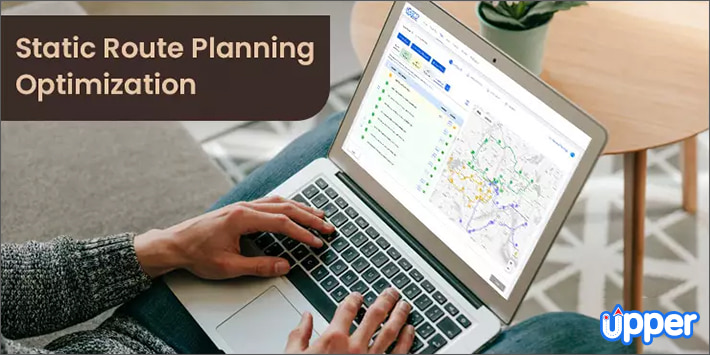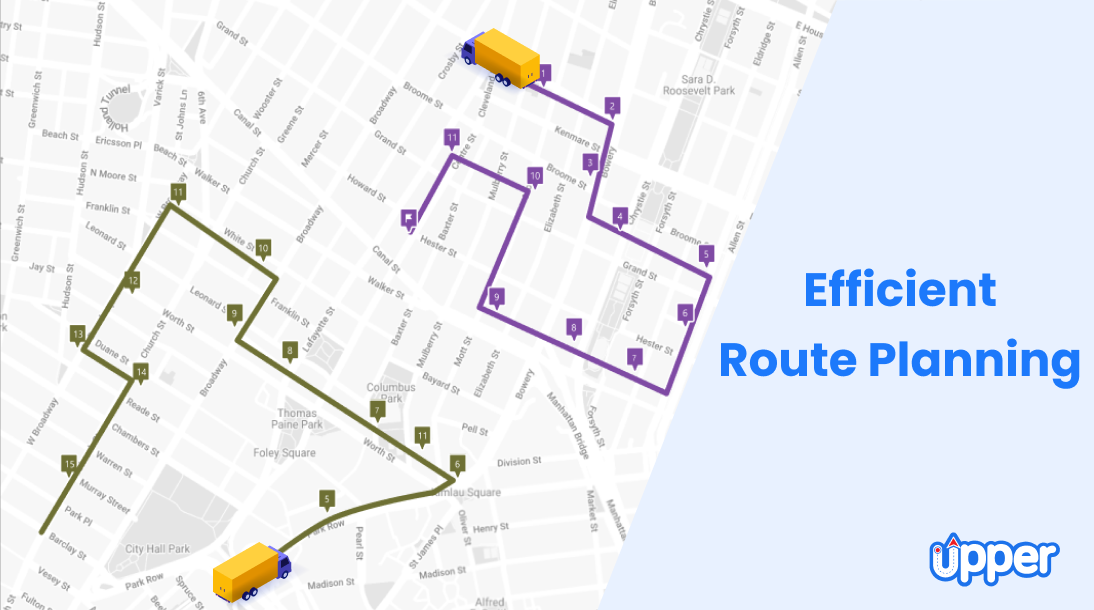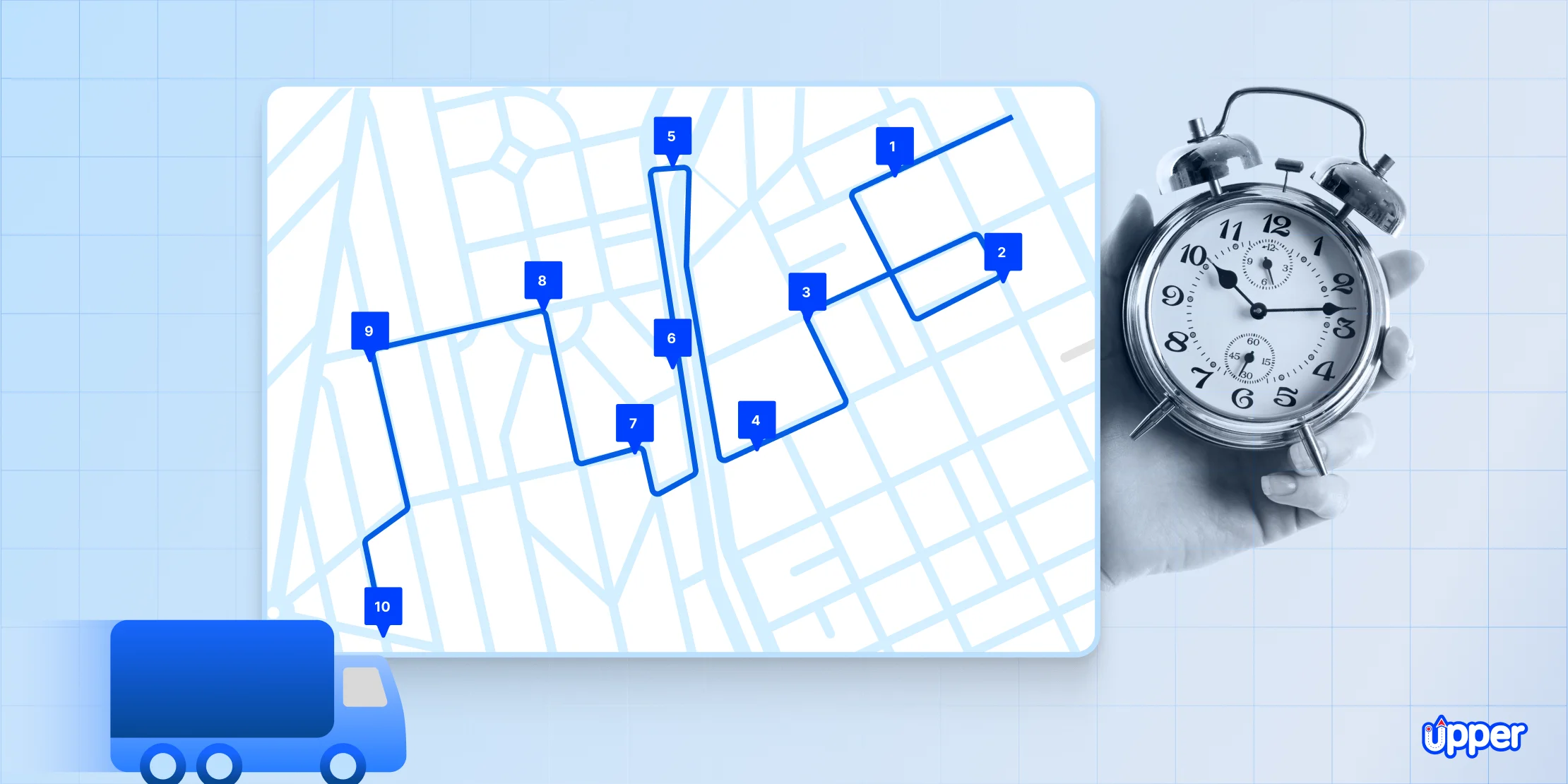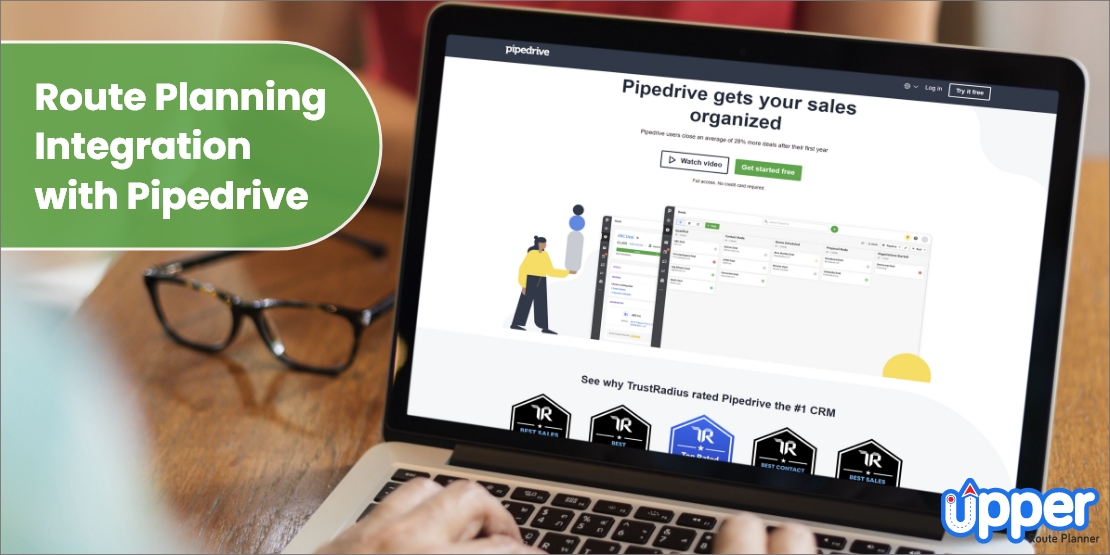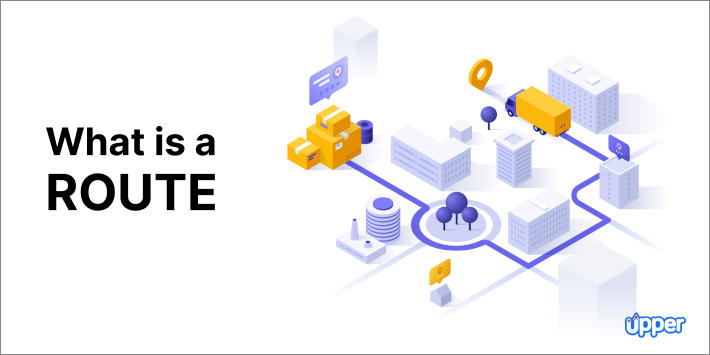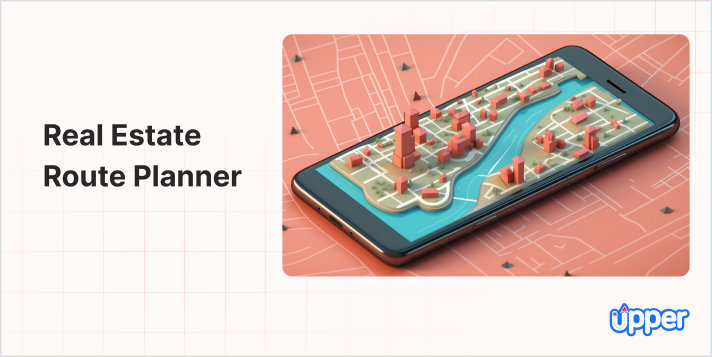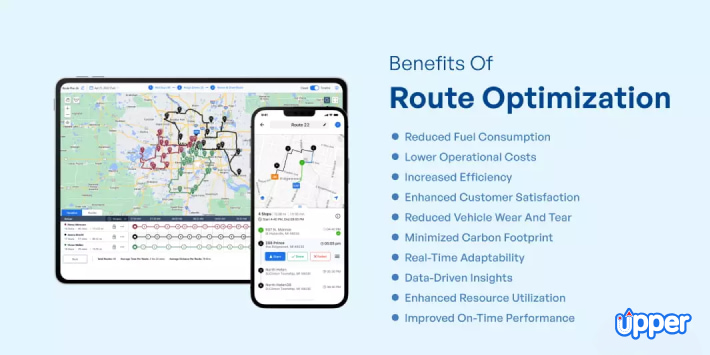 Key Takeaways:
Key Takeaways:
- Static route planning is popular for optimizing delivery routes that don’t change frequently.
- Different factors like delivery windows, vehicle capacity, and traffic patterns must be considered while creating static routes.
- Moreover, static route planning also helps decrease overall costs and enhance efficiency; however, it is not the only solution for dynamic delivery needs.
Small or large businesses linked with delivery services often have difficulties finding the most efficient routes. This is because they are still using a static route planning method, which has fixed delivery stops taking too long for drivers to make deliveries.
This traditional method used by logistic companies will demand more time from dispatchers and drivers. As a result, delivery operations may take a hit, and it would leave customers highly disappointed.
So, what do you think? Is this the right time to shift your focus from static route planning optimization to dynamic route planner software? Let’s find out.
Forget Spaghetti Routes, Optimize Routes for Your Entire Team with Upper
Start a 7-Day Free Trial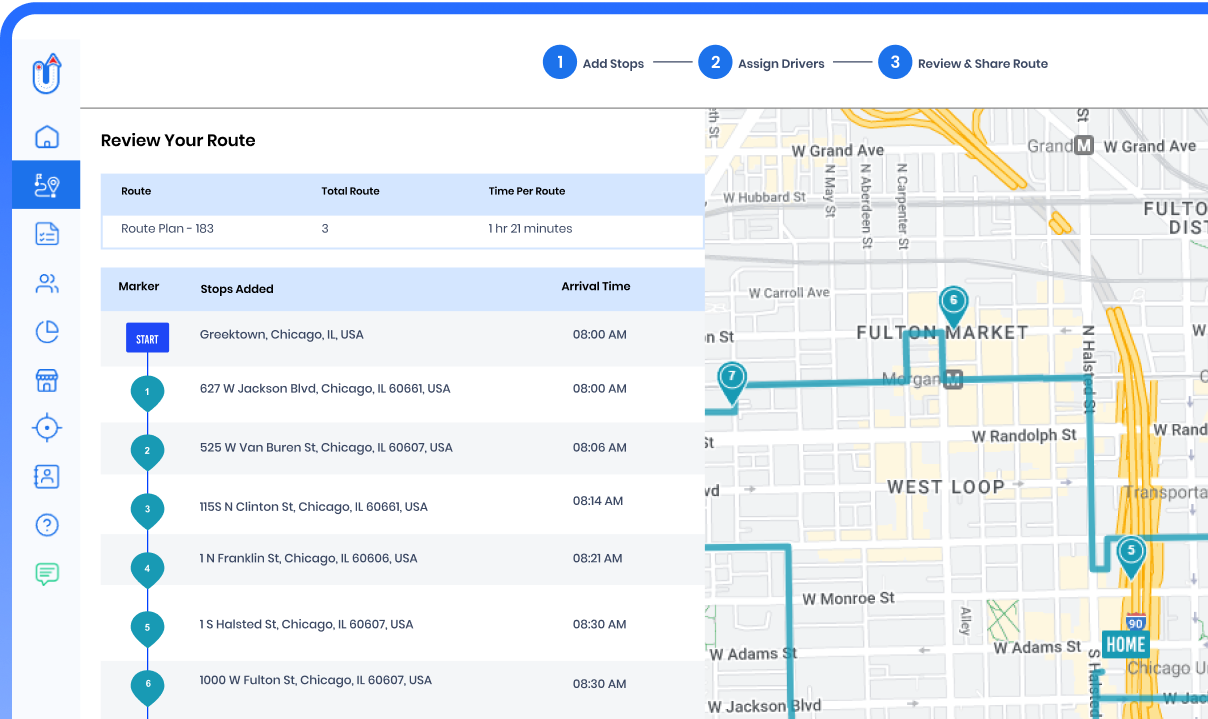
Table of Contents
What is Static Route Planning?
Static route planning is a method of creating delivery routes that do not change frequently. This type of route planning is typically used for businesses with a regular delivery schedule and a fixed number of stops. Static route planning can be done manually or with the help of route planning software.
It is a traditional method used for delivering products in which routes are pre-decided by the owners. These routes neither get optimized nor allow any deviations once the driver is released from the warehouse. In short, the driver will follow the same route from the first to the last delivery stop.
Those who are using this method may not get real-time updates and there would be no direct connection with the drivers on road. Unfortunately, it will stretch the delivery time and customers would not be satisfied with your services.
Moving forward, let us find out what obstacles you may face while opting for static routing.
Challenges of Static Route Optimization
Businesses that rely on a static method are likely to have ups and downs while making multiple deliveries. Here are some of the major challenges of using static routes.
1. Last-minute Reoptimization:
Delivery-based businesses are likely to have a last-minute change of routes which means static routes will not reoptimize the route plan. This method does not offer long-term solutions for last-mile delivery hassles.
2. Communication Gaps:
Obviously, if you are following static routes, your drivers are likely to miss important instructions from the dispatcher team or customers. In case, customers want to give instructions, they might not have direct contact or the driver may fail to follow those instructions.
3. Lack of Fleet Management:

Another challenge you may come across is that you need to handle the everyday assignments of fleet drivers. You may have more or less vehicles which might affect operational costs.
4. No Driver Support:
The static method will not have driver-friendly assistance on road. This means you need to keep calling every time to deliver the instructions. Also, drivers may have unnecessary stops to reach the destination.
5. Long Routes:
Once the product is dispatched, your driver will not be aware of live traffic or restricted areas and they may have to take long routes for deliveries. Hence, this will result in higher vehicle costs.
6. No Real-time Tracking:
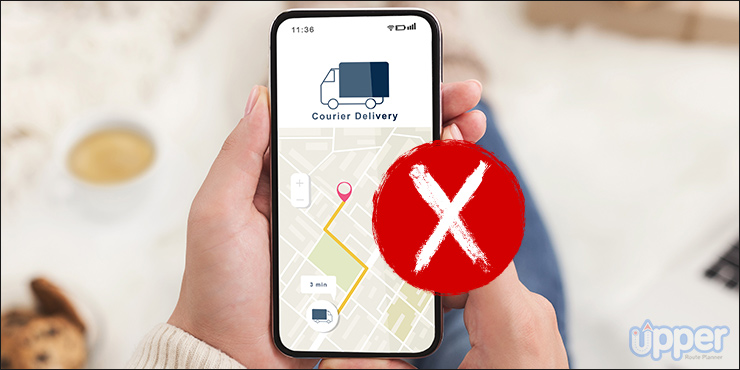
Without automated routing software, there will be no idea of the driver’s location. On the other hand, customers won’t have any real-time updates regarding their parcels.
Static vs Dynamic Route Optimization
| Static Route Planning | Dynamic Route Optimization |
|---|---|
| Takes longer to find routes | Finds optimized path quickly |
| No real-time tracker | Allows real-time updates |
| No idea about the actual delivery time | Sends ETA to customers |
| Drivers will have no idea of on-road activities | Prepares the routes as per traffic conditions on the road |
| Chances of miscommunications with a delivery crew | It makes sure drivers and customers stay in a loop till the completion of delivery. |
Why You Should Go For Dynamic Route Optimization?
Being a business owner, if you receive more complaints from customers about a slower delivery process, then you should think beyond static routing. In case you are wondering how dynamic route planning is a solution to your delivery chaos, below are the answers.
- It is integrated with an advanced algorithm that helps you quickly optimize the route plan in minutes.
- Dynamic routing will enable real-time data to the admin and customers as well.
- Business owners will not be worried about drivers’ availability and their assignments.
- Customers will receive updates about the delivery process so they can make themselves available.
- Dynamic routes will offer more support to the delivery crew and therefore reoptimizing routes will be a lot easier.
- By opting dynamic method, you can avoid the consequences of unexpected events in-between the delivery planning process.
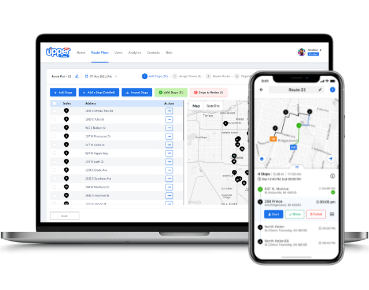
Upper Route Planner
A Simple-to-use route planner that every one is talking about.
- Save up to 95% of planning time
- Save up to 40% of time on the road
- Plan 500 stops at once
FAQs
Yes, you can hassle-free plan the routes and direct your crew members to deliver the products. You can even manage pick-ups and deliveries using static routes, but there would be a great chance of late deliveries as drivers will not have on-demand support. These late deliveries may lead to confrontation with customers.
Business owners planning routes from scratch considering the parameters like traffic conditions, toll roads, and the weather is referred to as dynamic routing. It helps you find optimized routes within a minute. Thus, you will have successful deliveries in a timely manner.
The automated software pulls you out of the delivery trouble and helps you make deliveries real fast. It will reduce unnecessary delivery vehicles’ fuel costs and save valuable time. The software will give a better customer experience which might give accelerate your business productivity.
Join Hands with Upper and Get Rid of Static Routing
Businesses connected with the delivery services should use dynamic route optimization tool to ease the delivery operations. It will help you manage fleets and delivery drivers no matter if you have same-day multiple deliveries. We recommend using the Upper Route Planner for smoothly running your delivery business.
The routing software will not only help you find the shortest routes but also lessens your assigning job. Delivery features like route scheduling, live monitoring, driver’s app, adjusting pickups-deliveries, and proof of delivery will aid you to uplift the product sales. In addition, customers will be happy with your services as well.
See using Upper has many perks, don’t believe us? Start a FREE Trial NOW and explore the features of one of the best route planners.
